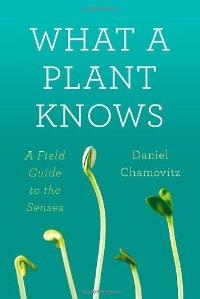
In What a Plant Knows, Daniel Chamovitz sheds light on parallels between human senses and the mechanisms by which plants notice and respond to environmental stimuli. If we understand the ways plants respond to touch, light, stress and volatiles (smell), it may improve the way we evaluate human response. With deeper insights into plant reactions, perhaps horticulturists may modify the way they tend plants. For example: people usually appreciate a hug, but plants are alarmed by touch! If we are slightly inebriated our proprioceptive positioning is compromised (our finger may not know exactly where our nose is for that sobriety test!) but read to find out what experiments answered the question: "How do plants tell up from down?" People delight in the fragrance of a rose but recoil from a blooming Amorphophallus; plants respond to ethylene gas by synchronizing fruit ripening but react aversely to paint volatiles. Experimental facts can be slow reading but useful snippets can be gleaned from the solid scientific data Chamovitz has compiled from reputable sources. Read What a Plant Knows to see human sensory responses in a different light and to gain an appreciation of plant responses that help them endure and adapt to environmental stimuli and stress.
Jody Fetzer is a Garden Supervisor / Plant Health Specialist at Hillwood Estate, Museum & Gardens in Washington, DC and a member of the Potomac Valley Chapter of NARGS.
